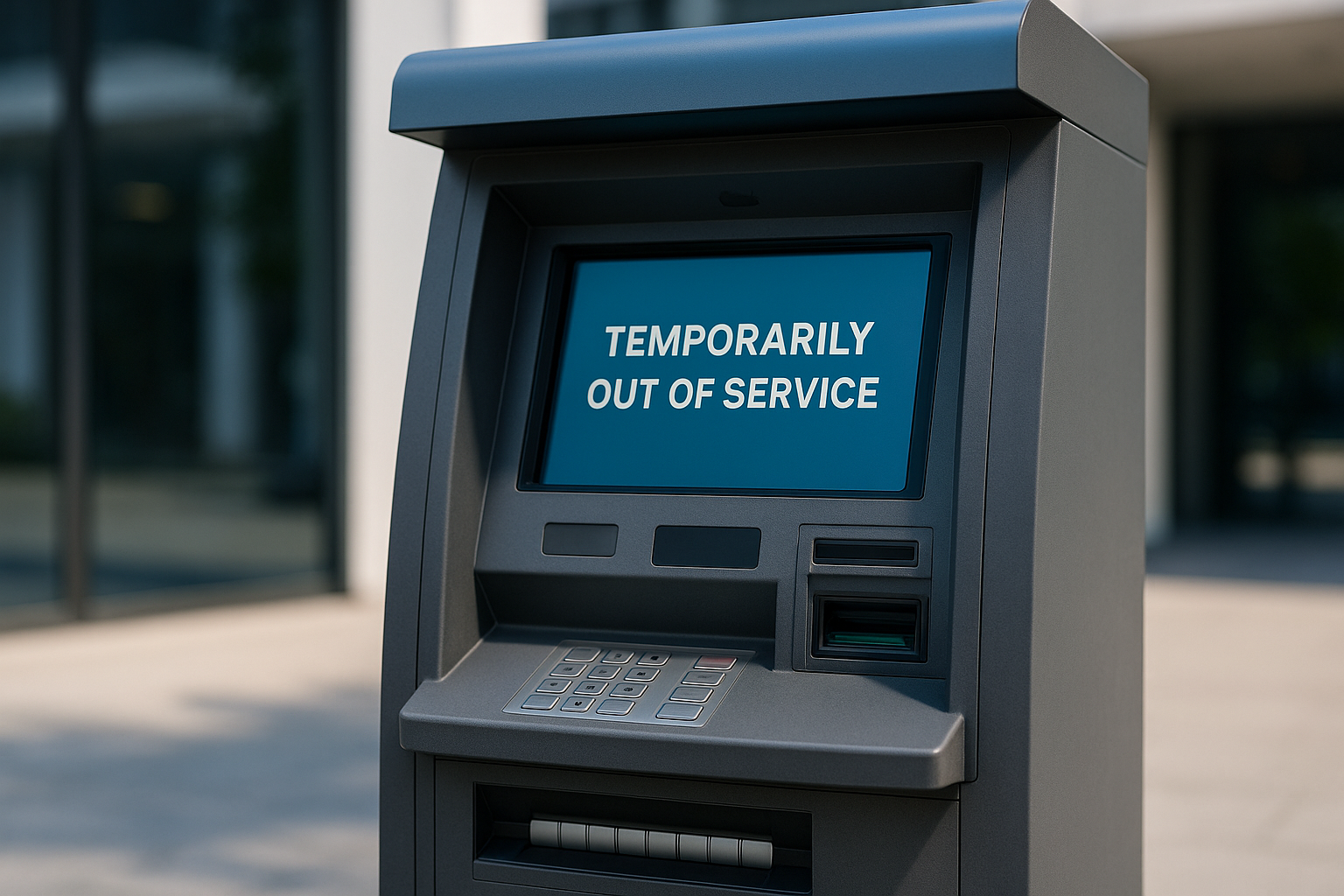Few things are more frustrating than driving to an ATM, only to find an “Out of Service” screen or empty cash trays. Fortunately, you can often tell whether an ATM is working before you get there by checking network data, bank apps, and a few physical signs once you arrive. Here’s how to avoid the hassle and find a working machine faster.
1. Check the ATM Status in Your Bank App
Most modern bank and credit-union apps display live or recent ATM status. If a machine is temporarily down, it usually appears with a warning symbol, gray icon, or “Unavailable” tag. This data updates every few hours as technicians service the machines.
If your bank doesn’t show real-time information, try our real-time ATM locator for working machines near you — it aggregates multiple networks to help confirm operational ATMs nearby.
2. Look for “Temporarily Out of Service” Screens
If the ATM’s screen is blank, frozen, or flashing a “Temporarily Out of Service” message, it’s best to move on. This indicates either a network outage, maintenance update, or a jam in the cash dispenser.
Machines with dim lighting, exposed cables, or empty receipt bins are also strong clues that the ATM is currently offline or waiting for servicing.
3. Listen for Startup Noises or Screen Activity
Functional ATMs hum softly, display logos, and cycle through “Welcome” screens. If the screen remains dark and you don’t hear the fan or drive inside, it’s likely powered down. On the other hand, flickering displays or looping error codes may mean a temporary software crash.
When in doubt, note the error number and check our ATM error code directory for diagnosing issues to see what it means.
4. Ask Nearby Staff or Look for Bank Notices
If an ATM sits inside a gas station, pharmacy, or grocery store, employees often know when the machine was last serviced. A paper notice taped near the screen (or missing entirely) is another clue—it might list a refill date or contact number for maintenance crews.
5. Know the Signs of an ATM Out of Cash
Sometimes, an ATM looks normal but can’t dispense money. This usually happens near weekends or paydays when demand is high. You might get an on-screen message like “Unable to process” or “Transaction canceled.”
Our guide on what to do when an ATM runs out of cash explains how to handle failed withdrawals safely without triggering duplicate charges.
6. Try a Network Locator Instead of Guessing
If you’re unsure whether a specific machine works, use an official network tool such as the Visa ATM Locator. These tools refresh several times a day with live availability reports from major issuers and processors.
7. When To Avoid Using a Malfunctioning ATM
- Never reinsert your card if the first attempt fails.
- Walk away if the machine restarts mid-transaction.
- Don’t use an ATM with missing parts, dangling wires, or tape over the keypad.
- Report any suspicious screens or frozen sessions to your bank immediately.
If your card was charged but you received no cash, check our detailed troubleshooting guide for common ATM withdrawal problems for next steps and refund instructions.
8. Final Tips for Reliable Cash Access
- Favor ATMs attached to banks or credit unions—they’re serviced daily.
- Use daylight hours whenever possible.
- Bookmark one or two alternate ATMs in your neighborhood in case your usual one goes offline.
- Report repeated outages through your bank’s app so they can escalate maintenance faster.
Even reliable machines can run out of bills occasionally. Checking ahead and knowing how to spot trouble early will save you time, gas, and stress.
For additional support, visit the FDIC Consumer Help Center or your bank’s website for direct contact options if a withdrawal error occurs.
